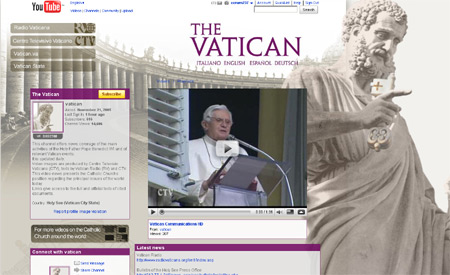This Week at Vatican II
– Fifty Years LaterDecember 1962
OBSERVERS AND GUESTS AT THE COUNCIL
In the 19th
century, during the months leading up to the First Vatican Council, Blessed
Pope Pius IX wrote to all the Patriarchs of the Orthodox Church; they were
informed that, if they “ended their
separation” from the Roman Catholic Church, they would be welcomed at
Vatican I – as full, validly ordained and consecrated Bishops. During the same days in 1868, Pius IX issued
a call to Protestant leaders and their people “to return to the Catholic Church,” ending their visible separation
from Catholic unity. Both the Orthodox
and the Protestants were offended by the wording of the appeals. Neither group
participated in the First Vatican Council.
Nearly a century
later, before Vatican II convened, Blessed Pope John XXIII – with talents he had honed from years in
diplomacy --- invited Orthodox and Protestant “observers” to the Council. He joyfully welcomed them to the First
Session -- the first time a Pope had ever met collectively with a group with non-Catholic
representatives, including:
Patriarchate of Moscow
Coptic Patriarchate of Alexandria
Ethiopian Church
Armenian Catholicate of Cilicia
Russian Church in exile
(Among the Protestants:)
Anglican Union
Lutheran Federation
Presbyterian Alliance
German Evangelical Church
Disciples of Christ
‘My Brothers in
Christ.’”
In a moving response, Dr. Edmund Schlink, a
Lutheran professor from Heidelburg University, said that Pope John “by the
initiative of his heart has created a new atmosphere of openness in regard to
the non-Roman churches.”
After six weeks, the distinguished
professor Oscar Cullmann of the Universities of Basel and Paris explained to
the press that the invited Observers had received all the Council texts, attended
all General Congregations, could make their views known at weekly meetings of
the Secretariat, and had personal contact with the Bishops and their periti -- “daily reveal(ing) to us how truly we are
drawn closer together.”
However, in “The Rhine flows into the Tiber”, historian R. M. Wiltgen
recalls: “Professor Cullman also pointed
out that mistaken conclusions were being drawn from the presence of the
Observers … among both Catholics and Protestants who appeared to think that the
purpose of the Council was to bring about union between the Catholic and other
Christian churches. That was not the
immediate purpose of the Council, he said, and he feared that many such people
would be disillusioned when, after the end of the Council, they found that the
Churches remained distinct.”
Next Week: The End of the First Session
- Monsignor John T. Myler








